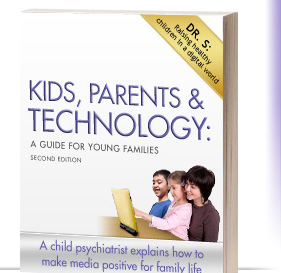Part 3: FOOD FOR THOUGHT
Chapter 11: Technology and Play: A Different Game
Technology has also popularized among increasingly younger children an intermediate class of toy-like objects that are also tools used by adults. (http://www.nytimes.com/2005/10/13/technology/13toys.html?_r=1&scp=23&sq=children%20technology&st=cse).
It is only a matter of time before very young children’s play will become a very busy marketplace for all sorts of sophisticated interactive media devices and intelligent toys (http://www.nytimes.com/2006/02/11/technology/11toys.html?_r=1&scp=45&sq=children%20technology&st=cse).
Healthy brain maturation and psychological development through childhood and adolescence and beyond depend on how your child advances along two basic interwoven processes — separation and individuation (Mahler, M. (1979). The Selected papers of Margaret S. Mahler: Separation-Individuation, volume II, NY.)
Experts have long understood that infants attempt to master the early days of this challenge by inventing a clever halfway measure to assist their transition — an attachment to a transitional object (Winnicott, D.W. (1971). Playing and Reality. New York. Basic Books.)
If present trends continue (http://www.nytimes.com/2007/11/29/technology/29techtoys.html?_r=1&scp=57&sq=children%20technology&st=cse), babies and parents will soon be charmed by an endless stream of highly interactive, stimulating, dazzling, and novel interactive digital media devices to place in babies’ cribs in their zeal to jumpstart intellectual development.
Dr. Sherry Turkle and her M.I.T. colleagues have been breaking new ground studying human/machine interactions (http://web.mit.edu/sturkle/www).



